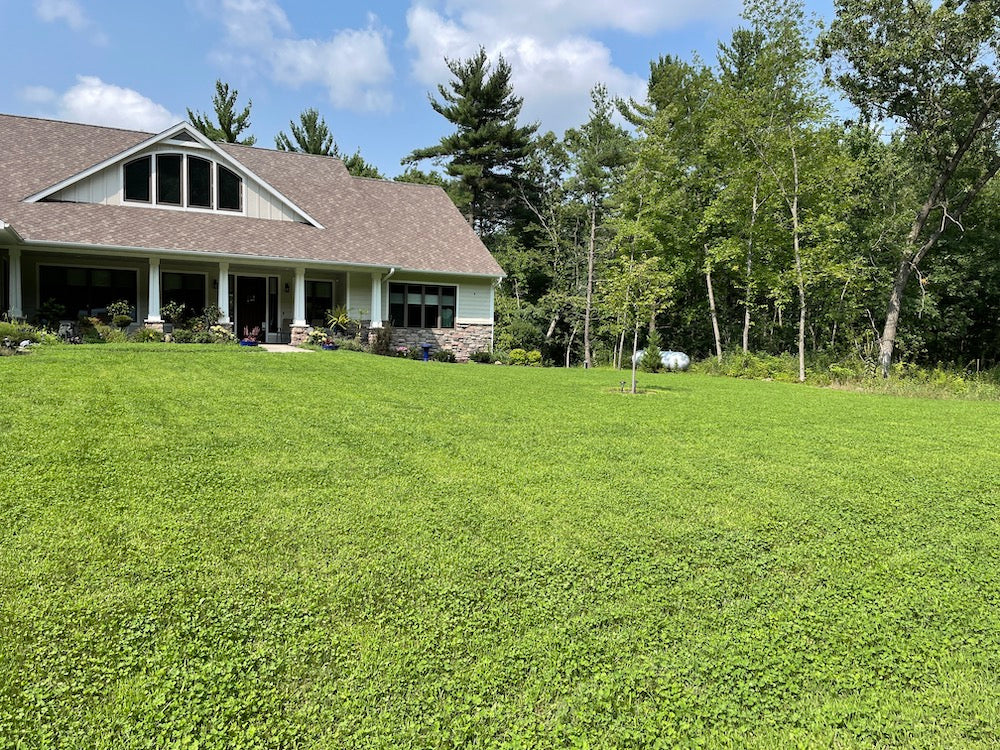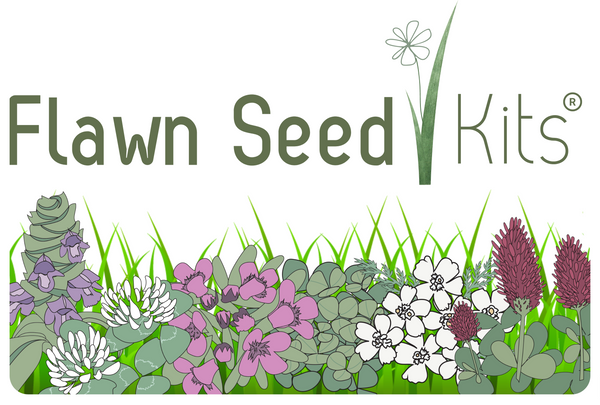
7 Benefits of Flowering Lawns
Share
Grass lawns are an ecological “dead space”. And with over 50 million acres of turfgrass in the United States a lot of good can be done by converting non-natural grass lawns into flowering lawns and here’s seven reasons why.
1. Less mowing. A regular grass lawn requires to be mowed weekly or even more often during spring and late summer when they grow more rapidly. What you may not realize is that by mowing more often and mowing shorter increases the growth rate of the grass making it need more frequent mowing. With a flowering lawn you increase the height that you leave the lawn to about 4-6” and reduce the mowing frequency down to 1-2 times per month saving you a portion of the three billion gallons of gas used to maintain lawns each year.
2. No more watering. Once a flowering lawn is established it requires no additional watering. A grass lawn requires to be watered through dry periods to keep it green and prevent it from dying through droughts. Flowering lawns have a combination of grass and broadleaf plants like clover and self-heal which shade the soil surface keeping it cool and preventing it from drying out.
3. No more fertilizer. Grass lawns require nitrogen to grow each year otherwise they will thin out and give way to weeds. Flowering lawns contain white clover which fixes nitrogen from the atmosphere and makes it available in the soil for plants to use making fertilizer not necessary.
4. No more pesticides. Each year 59 million pounds of pesticides are used to keep lawns looking “neat”. These harmful products threaten the health of people, pets, and the environment. Many pesticides are known to directly harm beneficial pollinators like bees and butterflies as well as aquatic species like frogs and fish.
5. Support beneficial pollinators. Flowering lawns offer an abundance of pollen and nectar for bees, butterflies, moths, and other beneficial pollinators that we rely on for food and flower production. It would be a very bare and boring planet without pollinators. Keeping your flowering lawn at 4-6” and not mowing during bloom periods supports these extremely important insects.
6. Reduce your carbon footprint. You can offset the carbon you produce by increasing the amount of vegetation on your property. A flowering lawn has 3-5 times the vegetation than a grass lawn and can capture more carbon and store it in the soil.
7. Save Money! Grass lawns are expensive to maintain. Americans spent $105 billion in 2020 to maintain lawns. That’s an average of $1,700 per household. A flowering lawn can be installed for as little as $150 and has annual maintenance costs of only 10% compared to grass lawns.
1. Less mowing. A regular grass lawn requires to be mowed weekly or even more often during spring and late summer when they grow more rapidly. What you may not realize is that by mowing more often and mowing shorter increases the growth rate of the grass making it need more frequent mowing. With a flowering lawn you increase the height that you leave the lawn to about 4-6” and reduce the mowing frequency down to 1-2 times per month saving you a portion of the three billion gallons of gas used to maintain lawns each year.
2. No more watering. Once a flowering lawn is established it requires no additional watering. A grass lawn requires to be watered through dry periods to keep it green and prevent it from dying through droughts. Flowering lawns have a combination of grass and broadleaf plants like clover and self-heal which shade the soil surface keeping it cool and preventing it from drying out.
3. No more fertilizer. Grass lawns require nitrogen to grow each year otherwise they will thin out and give way to weeds. Flowering lawns contain white clover which fixes nitrogen from the atmosphere and makes it available in the soil for plants to use making fertilizer not necessary.
4. No more pesticides. Each year 59 million pounds of pesticides are used to keep lawns looking “neat”. These harmful products threaten the health of people, pets, and the environment. Many pesticides are known to directly harm beneficial pollinators like bees and butterflies as well as aquatic species like frogs and fish.
5. Support beneficial pollinators. Flowering lawns offer an abundance of pollen and nectar for bees, butterflies, moths, and other beneficial pollinators that we rely on for food and flower production. It would be a very bare and boring planet without pollinators. Keeping your flowering lawn at 4-6” and not mowing during bloom periods supports these extremely important insects.
6. Reduce your carbon footprint. You can offset the carbon you produce by increasing the amount of vegetation on your property. A flowering lawn has 3-5 times the vegetation than a grass lawn and can capture more carbon and store it in the soil.
7. Save Money! Grass lawns are expensive to maintain. Americans spent $105 billion in 2020 to maintain lawns. That’s an average of $1,700 per household. A flowering lawn can be installed for as little as $150 and has annual maintenance costs of only 10% compared to grass lawns.
